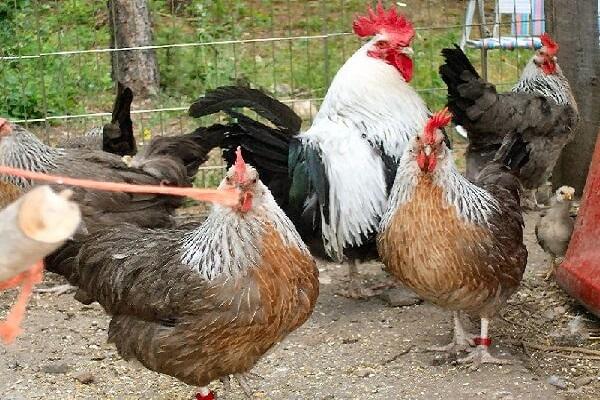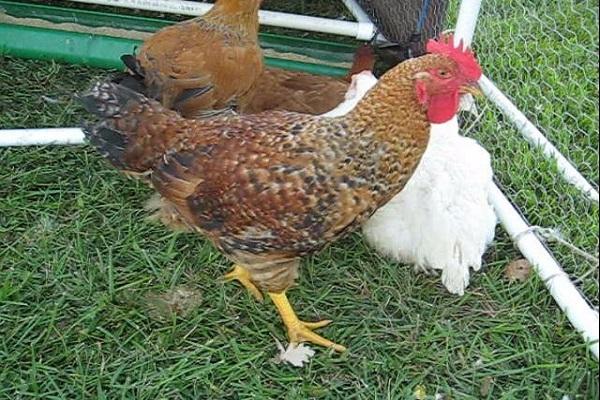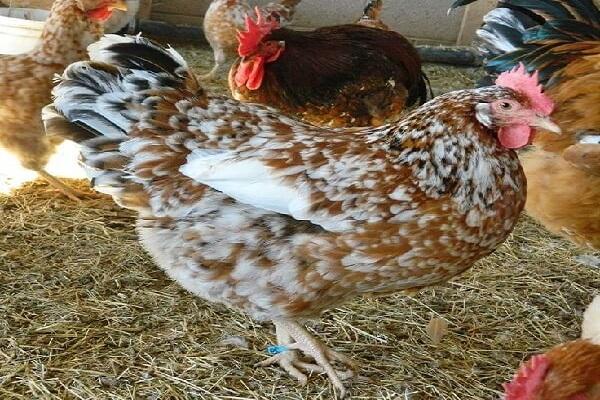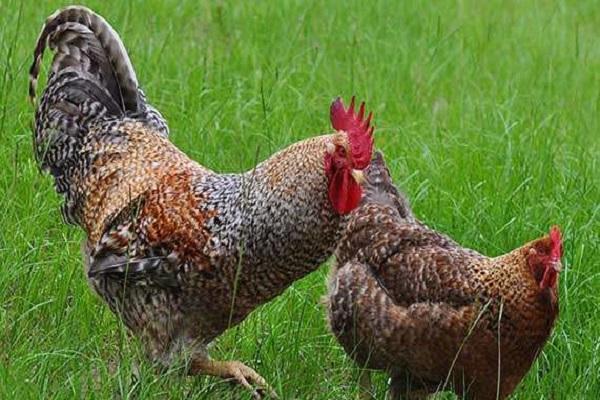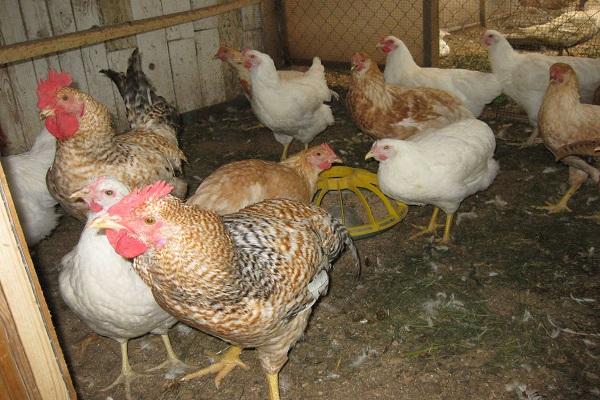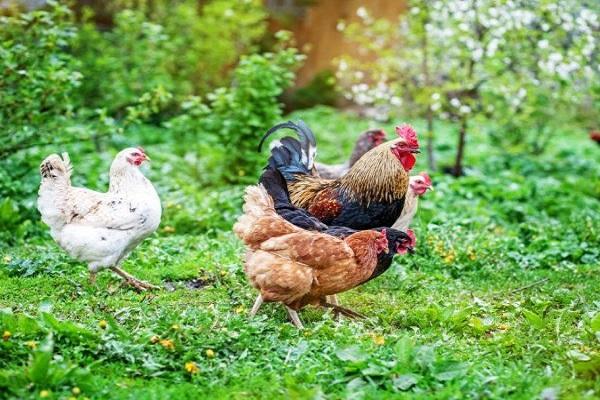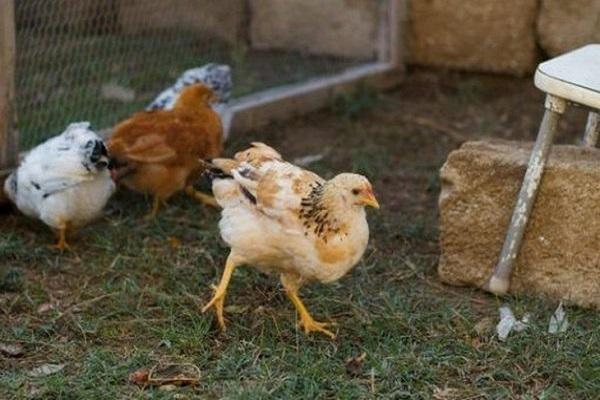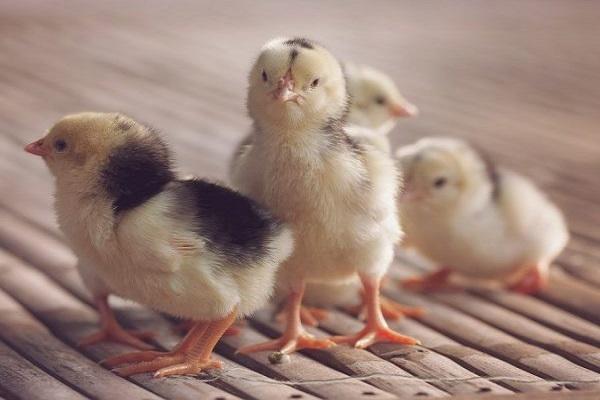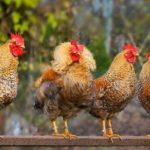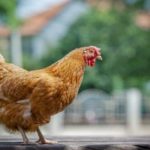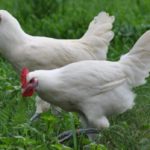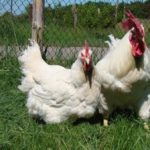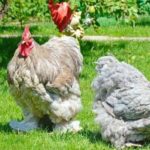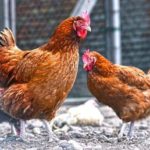Farmers and private farm owners are well aware of the breed of chickens called tricolor. The bird looks elegant due to its tricolor plumage, but interest in it is not caused by its appearance, but by the presence of high characteristics. In order to quickly raise a bird with healthy dietary meat, it is worth knowing the characteristics of the breed, the subtleties of keeping and caring for it.
- Historical reference
- General characteristics of the breed
- Appearance
- Color
- Egg production of the breed
- Early ripening and taste of meat
- Temperament
- Maternal instincts
- Positive and negative sides
- Features of keeping and caring for birds
- Chicken coop requirements
- Walking yard
- Feeders and drinkers
- Shedding period
- Planned herd replacement
- What to feed chickens and hens
- Breeding Features
- Possible diseases and methods of treating them
Historical reference
The tricolor broiler was not bred immediately, but as a result of long breeding work carried out by French scientists. By crossing local breeds, they managed to obtain birds that quickly gain weight and whose meat has an exquisite taste.
Tricolor chickens quickly became in demand, spread throughout Europe, and were brought to Russia.
General characteristics of the breed
A distinctive feature of the tricolor breed is the tricolor color. The bird looks decorative due to the combination of feather colors. Although the outlines of the body are smooth, the developed muscles of broilers are externally noticeable. A chicken weighs 3-4 kilograms, a rooster - 4-5 kg.
Appearance
The massive build of tricolor chickens and their rounded shapes look harmonious. The bird's legs are high and muscular. The head is large, proportionate to the powerful body. The comb, beard and earrings are well developed and scarlet in color. The skin on the head is covered with sparse short feathers and has a pink tint. The iris of the eyes is bright, brownish-red. The plumage is dense, voluminous, with a small amount of fluff. The paws are long and strong. Their color is bright yellow, like their beak.
Color
The plumage of tricolor chickens looks decorative. The color includes a combination of three colors, which includes:
- white;
- black;
- brown;
- beige;
- red;
- grey;
- yellow.
Individuals are often white in color interspersed with brown and black feathers. Reddish-beige birds with brown spots look impressive. There are chickens with a contrasting black and white mane and a bright red chest.
Tricolor roosters are more elegant than hens. They are especially beautiful if emerald feathers are adjacent to a white neck.
The standard color is brown wings, a beige-red neck and a black tail.
Egg production of the breed
Although the Tricolor breed is raised for its meat, its egg production is above average. Chickens become sexually mature at the age of 4-5 months and from this time they are able to lay up to 300 eggs per year. This result can only be achieved with proper feeding and care of the bird. Eggs of tricolor chickens with a brownish shell and weighing about 60 g each.
When the temperature in the chicken coop drops below +10 ⁰C, the breed’s egg production significantly decreases.
Early ripening and taste of meat
Tricolor chickens are an early maturing breed. Already at the age of one and a half months, broilers can increase up to 3 kg of live weight. At six months they have a body weight of about 5 kg.
The quality of the meat is high. In its characteristics it resembles redbred breed or master gray. Its fat content is low and its structure is fibrous. After heat treatment, the meat becomes soft and juicy.
Temperament
Tricolor chickens are calm birds that do not waste energy. They slowly move around the yard, sedately and phlegmatically looking for something tasty, doing excavations. The breed is non-conflicting and gets along easily with other relatives. They don’t like to make noise and shout, which is important when neighbors live nearby. The bird quickly gets used to new conditions and owners. Their calm temperament means that tricolor chickens can live in cages, in confined spaces, or in poultry farms.
It is difficult to scare birds; they practically do not react to the presence of people nearby. But in order for broilers to grow quickly and lay eggs regularly, it is necessary to create for them a calm, friendly environment with normal conditions and proper nutrition.
Maternal instincts
The instinct to incubate eggs is one of the main ones for most birds, including agricultural breeds. But there are species that do not show signs of this instinct. These include tricolor chickens. Chickens are obtained from her using an incubator.
Even if you manage to place the hen on the eggs, there is no chance that she will not choke them due to her large weight. It is more rational to send individuals who have reached a certain weight to slaughter for meat than to wait several months before laying eggs.
Positive and negative sides
The nature and characteristics of the tricolor chicken breed allow us to draw a conclusion about its positive aspects:
- the bird is unpretentious and can grow successfully under normal conditions;
- undemanding to food;
- there is no need to invest heavily in its cultivation;
- young animals quickly gain weight;
- the funds spent on its purchase are quickly compensated;
- the meat is of excellent quality and delicate taste;
- high productivity and egg production of chickens;
- Thanks to its stable immunity, the bird is less susceptible to many viruses and diseases.
According to experts, tricolor chickens can be considered an ideal breed for growing in large poultry farms and private farms.
Its disadvantages include a weak brooding instinct. But this can be easily corrected by hatching chickens using an incubator.
Features of keeping and caring for birds
Correct arrangement of a chicken coop, places for walking, organization of care and feeding of poultry - a guarantee of early production of high-quality meat.
Chicken coop requirements
The living space for tricolor chickens should be clean and comfortable, regardless of where the bird is located - on the floor or in a cage.
The litter is kept dry by promptly replacing straw or sawdust with new ones.Indoor humidity is no higher than 70%.
The air temperature should be set so that the bird is comfortable. For normal existence in winter, it should not fall below 0 ⁰С, and in order for the chickens to continue laying eggs - +15 ⁰С. Drafts in the chicken coop are unacceptable; they lead to a delay in the development of young animals and their death.
For good orientation in space, the bird is provided with normal lighting, especially since colored broilers do not have sharp eyesight.
Additional fencing should be made around the chicken coop to prevent other animals from entering it.
Walking yard
For normal life, tricolor chickens need a place to roam. To organize a yard, additional territory is fenced off on the leeward side of the chicken coop. On the southern side, the fencing is made of chain-link mesh. Its height for broilers should be at least 2 m. A canopy is installed above the walking area, which will create shade in intense heat and protect the area from excess moisture in the rain. The soil should be periodically covered with sawdust, hay, and straw so that it does not turn into a swamp over time.
Feeders and drinkers
To ensure that the birds always have access to water and food, drinkers and feeders are installed not only in the chicken coop, but also outside, in the walking yard.
The feeder has the shape of an elongated trough. The material it is made of is environmentally friendly (metal, wood). The length depends on the number of livestock. To prevent fights and distribute the food evenly, one chicken is given about 10 cm of feeder. It is worth placing the containers above the floor so that the birds do not scoop up the food, but can easily get it out.
The drinking bowl must have a device that allows the chicken to drink without dirtying the water.Excess liquid flows into the pan and is later removed. Water lasts longer if its supply does not exceed 5 liters.
Shedding period
The first juvenile moult occurs in chicks during the change from down to feathers at the age of 5 weeks. In the future, the feather change takes place annually, in the fall, and ends after 1.5-2 months. During this period, chickens need food rich in sulfur. Bone meal, clover, peas, and cabbage help support them during this period. The egg production of tricolor chickens is significantly reduced or stops altogether.
If the molting does not end before the cold weather, it is worth creating conditions for the bird so that it does not experience discomfort..
Planned herd replacement
At the age of two to three months, chickens gain the required weight and are sent for slaughter. If for some reason this does not happen, there is no point in keeping the individual for more than six months, and the cost of food will exceed the cost of the meat obtained. If there is a breeding herd, it is kept for a year and a half, after which a planned replacement is carried out.
What to feed chickens and hens
Chickens are fed strictly according to the clock. Until they are two weeks old, they eat at least 6 times a day, and until they are 5-6 weeks old - 4 times. After this, the chickens are transferred to an adult three-meal diet.
Young animals are given food formulated according to a special, balanced diet. It includes, in addition to grain mixtures, also vitamins in the form of herbs, vegetables and special preparations. Along with drinking, chickens are given a chamomile decoction to prevent infectious diseases.
Adult tricolor broilers are fed following several rules:
- mixtures contain a high percentage of protein to build muscle mass;
- Dry and wet mash should be prepared for poultry, consisting of crushed grain, bone meal, steamed with skim milk or broth;
- We must not forget about the need to include plant foods and greens in the diet of tricolor chickens;
- salt, shells and chalk improve digestion.
Breeding Features
Young animals of the tricolor breed are most often purchased when the chicks are one week old. You can hatch chickens using an incubator, following the instructions.
Possible diseases and methods of treating them
The tricolor breed is resistant to major diseases. If poor care is taken, an outbreak of infection may occur:
- coccidiosis - transmitted through parasites, the bird experiences diarrhea and a rise in body temperature;
- typhus is a digestive disorder, treated with antibiotics;
- pasteurellosis - the bird becomes less active, the temperature rises, the color of its comb and earrings changes, treatment is with sulfonamides;
- salmonellosis - timely vaccination of the entire livestock is necessary.

